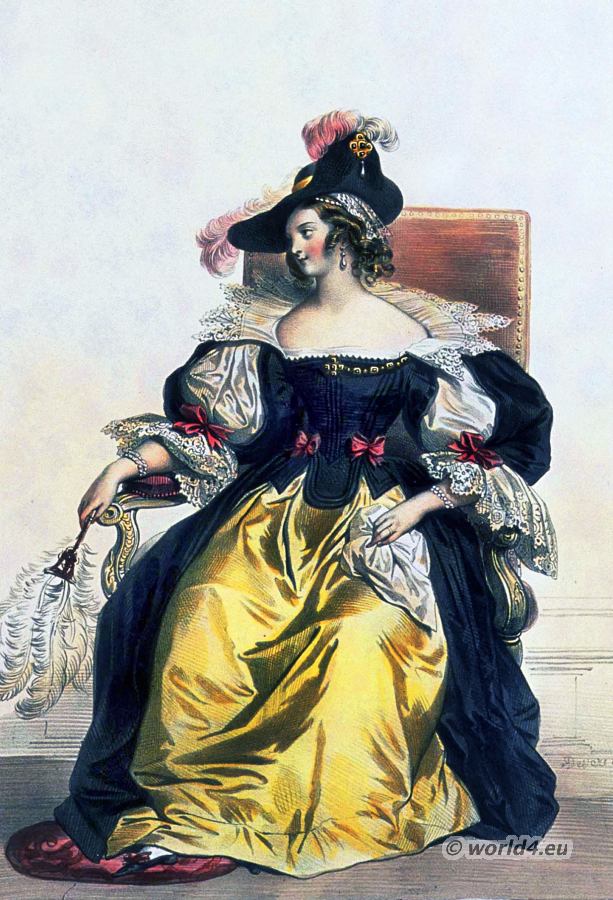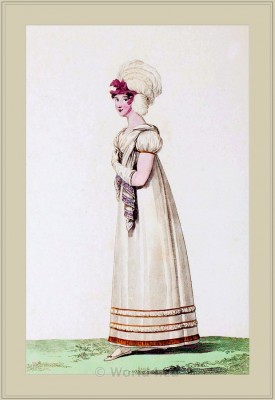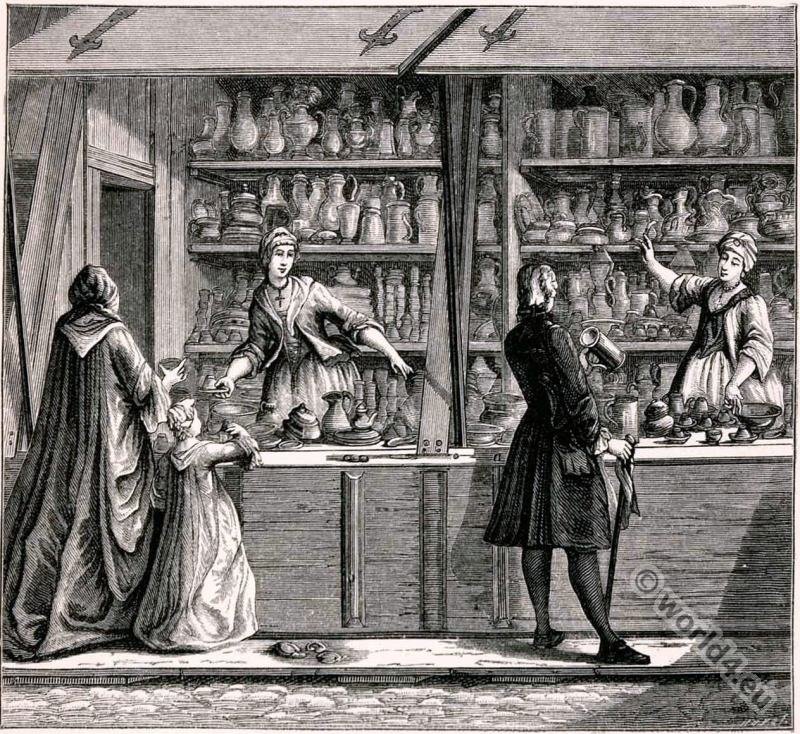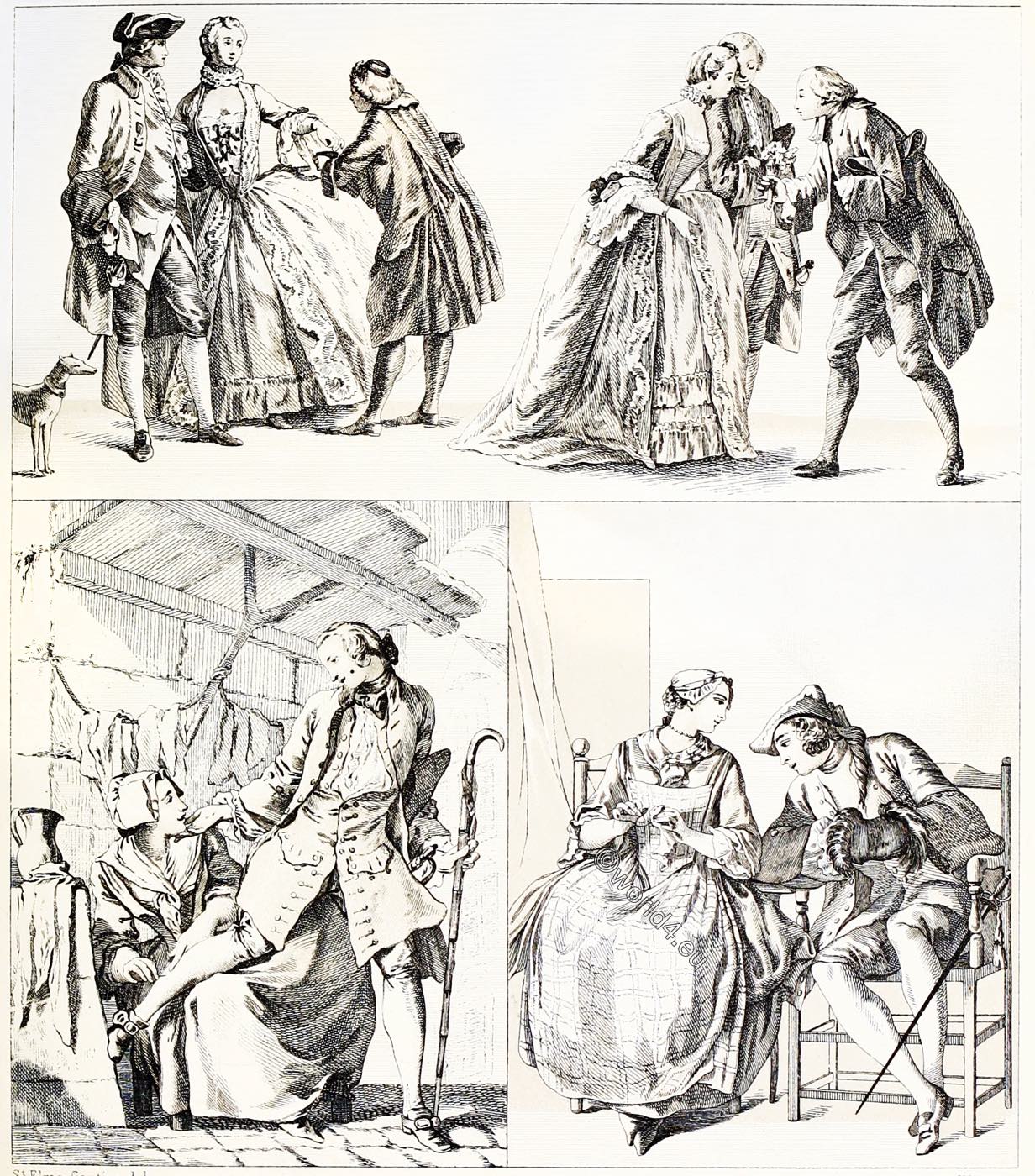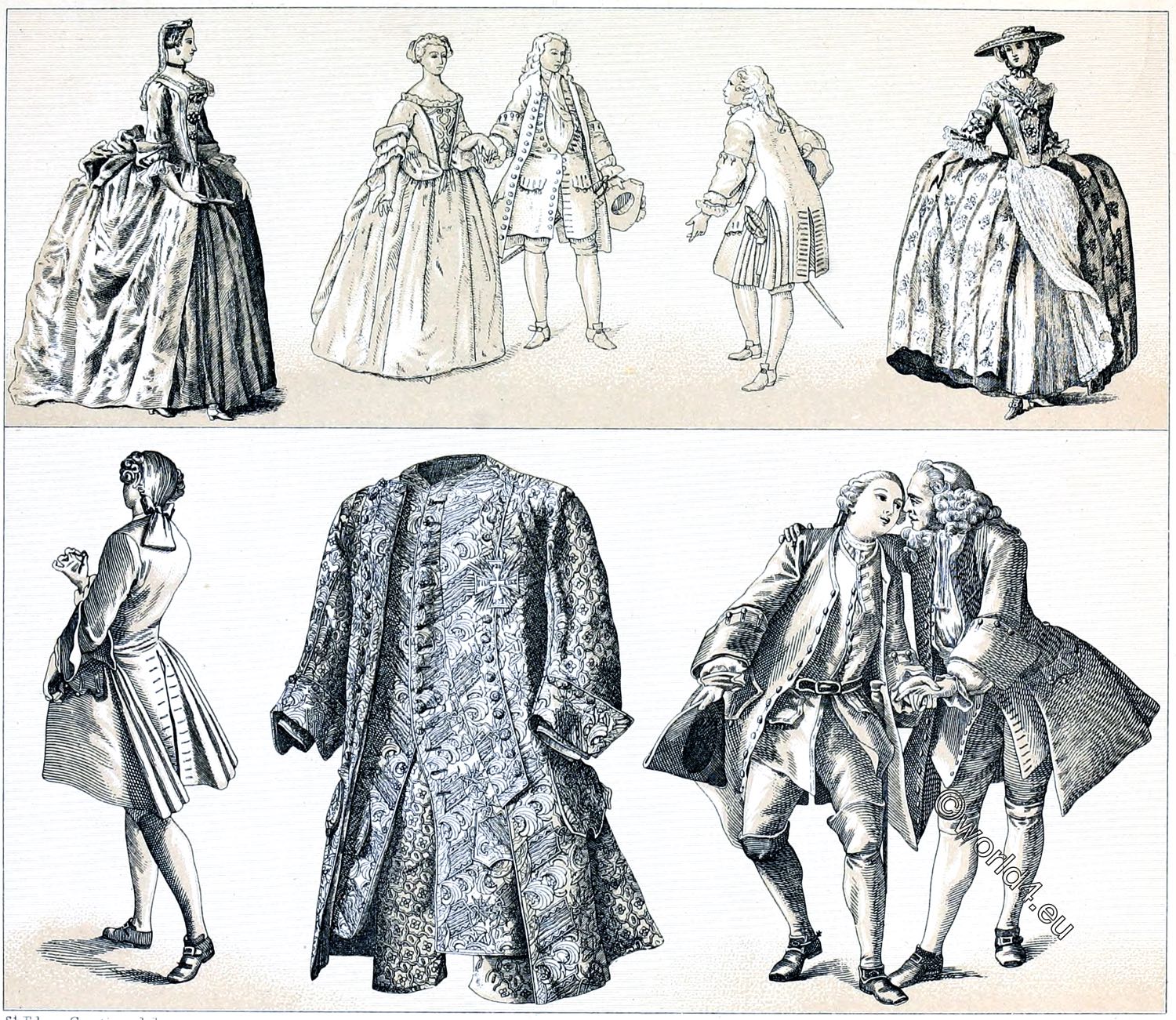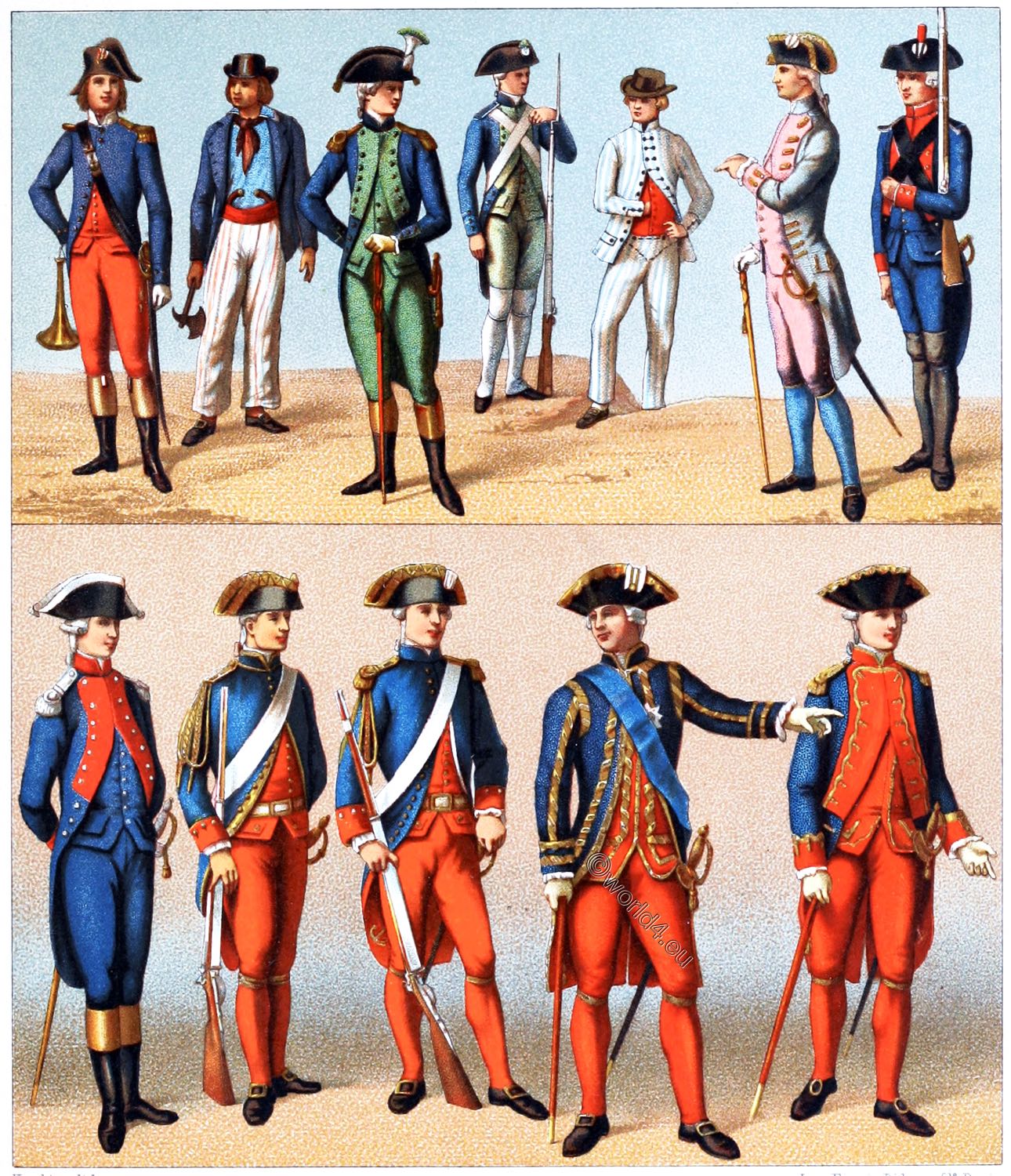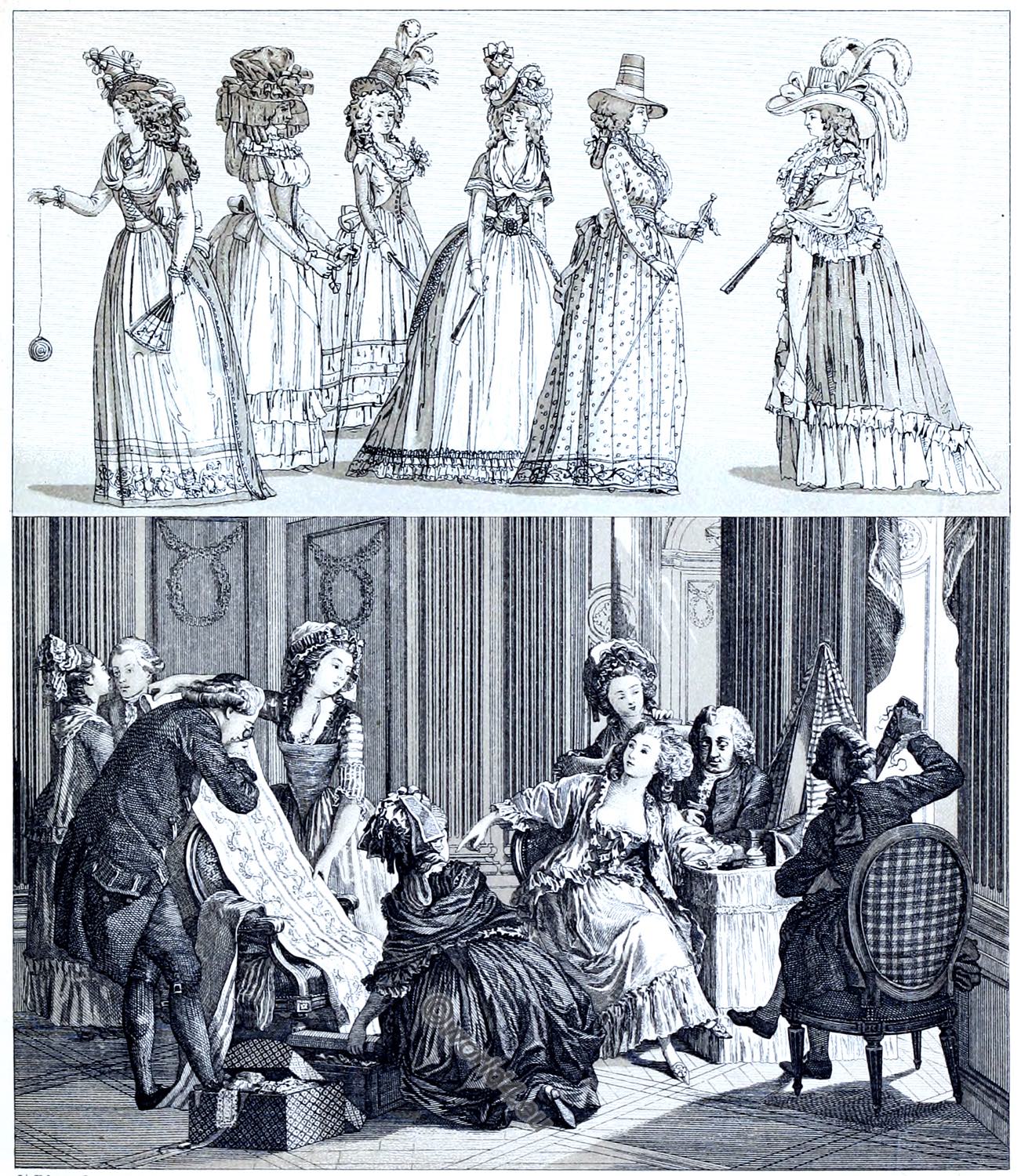
FRANCE. XVIII. XVIII CENTURY. FEMALE FASHIONS DURING THE REIGN OF LUDWIG XVI.
SECOND TOILET OF A LADY OF THE STATE, 1788 1789.
The Caracos, the shirts, the overskirt, etc.
1 1791
2 1789
3 1791
4 1792
5 1792
6 1787
The ceremonies of the grand lever.
The first toilet was made by a lady in the seclusion. The second toilet was at the grand lever *) in the presence of friends of the house at eleven o’clock. She is first attended by the doctor who examines the lady’s pulse every morning; a musician accompanies her singing with the guitar, and the Abbé, in this case a kind of distinguished valet, discusses household matters. A milliner presents a new fabric.
The toilet room is a rotunda with pilasters, over whose attic a dome ceiling arches, not visible here, which is painted with playing genies.
The chambermaids are equipped with the discarded clothes of their mistress. She herself still wears the peignoir (dressing gown or bathrobe), corset and petticoat are already put on. The hair is lightly pulled and only a light combing is needed to complete the hairstyle.
No. 6 of the upper series of pictures would represent the promenade costume of such a lady from 1787. A taffeta skirt en col de canard with falbelas; a coat à la reine in white taffeta and English crepe with a wide blonde trimming; a fichu à jabot; a fine straw hat à la couronne decorated with white taffeta and blue crepe.
No. 2 August 1789. Young lady with shirts à la grecque and hat au transparent. The fluffy shirt is made of linon and forms the so-called à Gorge Anglaise. The belt less bodice shows a bow with long ends at the back; it is made of taffet, as is the robe decorated with two furbels. The hat is made of crepe or black taffeta. Wearing a cane with a steel knob was fashionable throughout the period.
No. 3 January 1791. Young Parisian woman in a robe à l’Amadis with false sleeves and lapels. The hat is the chapeau flamand, red, white and blue, with golden cord, barbels and high feathers.
No. 1 September 1791. Young Parisian woman in a hat of green taffeta, opened at the back and front with red and white striped ribbon trimming. White demi-fichu in crepe.
The hair falls curly down the back of the neck. A golden chain with a medallion wraps around the neck. The red coupée en redingote is purple with a narrow silver bordure. The petticoat is white with pink and green bordure decorated with arabesques and playing geniuses. The waist is wrapped around a white and pink apron, ending in a barbel at the back. In her hands the lady carries a fan à la Montmédy and the joujou de Normandie (toy) or cran, which rolls up and down by means of a thread.
No. 5 January 1792, the young lady is wearing a skirt of English grosgrain, sown with dark green peas. The opening of the collar goes down to the belt. The hem of the robe is embroidered; the dark green belt ends in long light blue bows at the back. The fichu en chemise is garnished with lace. The hat of black atlas is garnished with ribbon, the hair is lightly coiffed and the chignon is decorated with a light blue bow.
No. 4 March 1792. Young Parisian woman en robe anglaise. Small hat, a kind of black Shawls, white and red lined, the hem of the skirt decorated with small round wrinkles, the belt closed with a buckle.
*) Lever (French se lever = to get up) referred to a morning reception in the bedroom in circles of the high nobility. The opposite in the evening, a reception before bedtime, was called a coucher (French se coucher = to sleep). The ceremonies of the lever and coucher gained particular importance during the period of absolutism in the 17th and 18th centuries. Access to the first and last audience of the day was usually granted to a selected group of people. The receptions held in the intimate dormitories were considered a privilege for the participants and played an important role in the court societies of the time.
The ceremonial at the court of Versailles was considered exemplary for numerous European princely courts.
Images according to simultaneous fashion journals. – The toilet after the famous engraving Qu’en dit l’abbé? from Delaunay to Lawrence.
Cf. E. und J. de Goncourt, La Femme au XVIIIe siècle. Quicherat, L’Historie du costume en France. – Mercier, Tableau de Paris. Journal des Luxus und der Moden von Weimar.
Quelle: History of the costume in chronological development by Auguste Racinet. Edited by Adolf Rosenberg. Berlin 1888.
Related
Discover more from World4 Costume Culture History
Subscribe to get the latest posts sent to your email.

